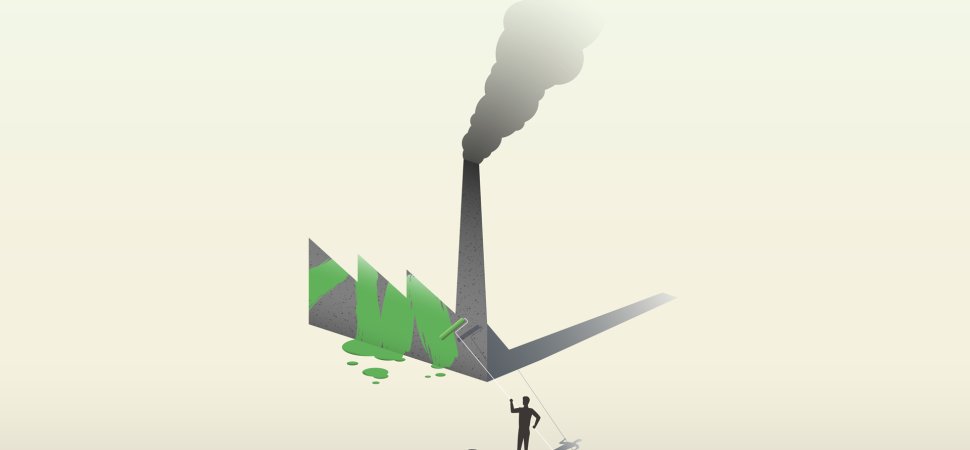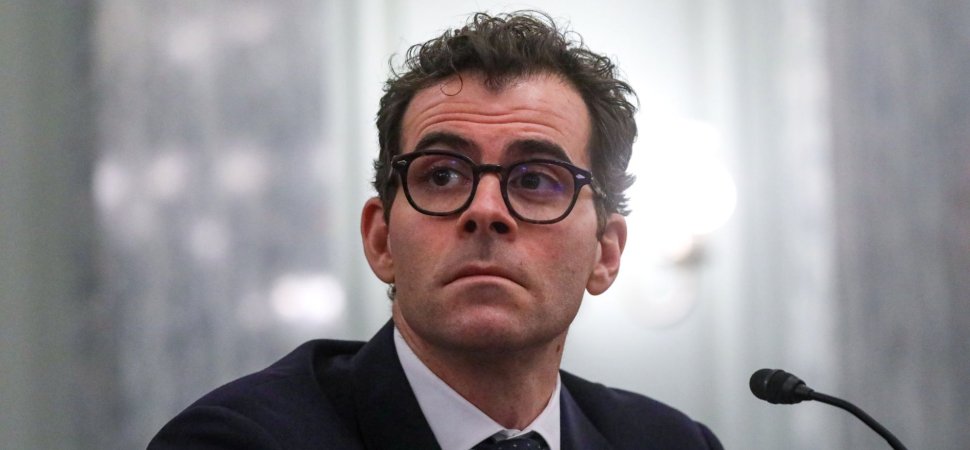| ? |
 |
|
Don't like ads? Go ad-free with TradeBriefs Premium    
CEO Picks - The best that international journalism has to offer!  S30 S30
| ? |
 |
 S1 S1Innovation Doesn't Have to Be Disruptive   For the past 20 years “disruption” has been a battle cry in business. Not surprisingly, many have come to see it as a near-synonym for innovation. But the obsession with disruption obscures an important truth: Market-creating innovation isn’t always disruptive. Disruption may be what people talk about. It’s certainly important, and it’s all around us. But, as the authors of the best-selling book Blue Ocean Strategy argue, it’s only one end of the innovation spectrum. On the other end is what they call nondisruptive creation, through which new industries, new jobs, and profitable growth are created without social harm. Nondisruptive creation reveals an immense potential to establish new markets where none existed before and, in doing so, to foster economic growth without a loss of jobs or damage to other industries, enabling business and society to thrive together.
Continued here
|
| ? |
 |
 S2 S2Capitalizing on Our Intellectual Capital   What if the United States became to the world what Massachusetts is to the U.S.? That is, what if it set out to be the leading exporter of education? Massachusetts plays a special role in America, welcoming students from everywhere and dispersing graduates widely, spreading state-of-the-art knowledge with them. California, with a population almost six times as big, a very strong economy, and high-quality universities, still confers only 2.5 times as many higher education degrees. Perhaps because of its educational intensity, Massachusetts’s per capita income is 19% greater than California’s and 27% greater than the national average.
Continued here
|
| ? |
 |
|
| ? |
 |
|
|
 S3 S3Why Entrepreneurship Programs for Engineers Fail   Entrepreneurship is an increasingly core component of commercial work, and one for which students in highly technical fields are ill-prepared. Blended entrepreneurial programs (BEPs) are attempting to answer this need by merging university-level entrepreneurial education with discipline-focused degrees in STEAM fields. It hasn’t been easy. STEAM students often show a gravitation toward certainty and a low tolerance for risk — personal characteristics at odds with those traditionally associated with entrepreneurs.
Continued here
|
 S4 S4 S5 S5Managing by Commitments   2. Reinforcing commitments. These buttress your defining commitments as your firm matures. They include daily actions such as customer contract renewals, and occasional big bets like a major acquisition. They build efficiency, sharpen focus, temper risk, and attract employees, customers, and partners who fit the company’s identity.
Continued here
|
 S6 S6Why It's So Hard to Scale a Great Idea   Why do some products, companies, and social programs thrive as they grow while others peter out? According to the author, there are five causes: 1) False positives, or inaccurately interpreting a piece of evidence or data; 2) Biased representativeness of population, or not making sure your samples reflect the larger population at scale; 3) Non-negotiables that can’t grow or be replicated; 4) Negative spillovers, or unintended outcomes; and 5) Cost traps. Here, he explains and offers examples of each cause, as well as how to anticipate or avoid them.
Continued here
|
 S7 S7How Organizations Can Support the Mental Health of Black Employees   In the wake of George Floyd’s killing, many leaders are overwhelmed and at a loss as to how to support their Black employees. Yet it’s critical that HR and DEI leaders step up to address the mental health impact on Black Americans in their workforce. The author provides several suggestions for how to do that. First, acknowledge the impact of racism on your employees. Provide Black employees with a safe place and bring in a skilled expert in racial trauma to help them process what they are experiencing and feeling. Second, offer culturally competent mental health resources. (e.g. don’t refer people to an EAP that isn’t culturally competent) Third, demonstrate support at the organizational level that shows the organization stands with your employees. Fourth, advocate as an organization for racism to be declared a public health crisis in your city and state. Most importantly, listen to what your black employees are saying and advocate for the suggested changes.
Continued here
|
 S8 S8The Problem with the "Poverty Premium"   In 2006 a company called Solae began selling soy protein powder in the slums of Mumbai. Solae, a subsidiary of DuPont, saw an opportunity to gain a toehold in the Indian consumer market while addressing malnutrition—a classic case of “doing well by doing good.” It expected the product to be a big success. Yet by 2008 the venture had failed. The soy protein, which cost 30 cents a packet, couldn’t compete on price with lentils, the staple protein in many Mumbaikars’ diets, which cost less than half as much for an equivalent serving.
Continued here
|
 S9 S9The Mobile Shopping Life Cycle   Mobile is turning “path to purchase” on its head. One of the most time-honored marketing concepts, that notion that a customer takes a predictable journey toward a sales transaction (in its earliest definition, starting with attention to a product, then moving to interest in it, then desire for it, and finally, action), has long provided the framework for marketers to strategize how to communicate with customers and exert influence. While the steps have been debated and refined over time, and the path is often now depicted as a “sales funnel” (with a large initial audience having awareness, funneling down to successively smaller groups having familiarity, consideration, purchase, and loyalty), the basic idea has remained that a customer’s commitment to a purchase intensifies at each step, and so should the marketer’s investment in bringing the transaction to a successful close.
Continued here
|
 S10 S10Procurement as Strategy   In 2004, just days after Greece unexpectedly won the European Soccer Championship, Adidas delivered more than 145,000 Greece team jerseys across markets in Europe. Smart marketing, right? Without a doubt. But perhaps even more impressive were Adidas’s global procurement efforts: Thanks to a centralized supply chain coordinated with its country-based sales subsidiaries, the company created just-in-time product not only for the championship team but also for the other national teams as they advanced through the series. To round out the success, Adidas’s flexible supply chain strategy delivered these sales at very low risk, avoiding any significant investment in materials or finished product.
Continued here
|
 S11 S11"Good" Companies Launch More New Products   Corporate social responsibility is becoming a clear priority: More than 6,000 companies in 135 countries have adopted the UN’s Global Compact, agreeing to align their operations with 10 principles relating to human rights, labor, environment, and corruption. But CSR remains controversial because of its impact on the bottom line. Critics charge that it saps firms—and shareholders—of capital. Proponents argue that it attracts consumers, enhances customer satisfaction, and bolsters public relations.
Continued here
|
 S12 S12 S13 S13How to Set Healthy Boundaries When Starting a New Job   Failing to set boundaries early on in a new job is not only exhausting, but it also traps you into high expectations that you need to continually live up to, which can be demoralizing and unsustainable. The author offers strategies on how to set healthy limits in the first days of a new job so that you can balance your own needs and make a good impression in the process: 1) identify what’s driving you, 2) consider the upside, 3) articulate and share your personal preferences, 4) apply your energy strategically, and 5) create and follow through on new habits.
Continued here
|
 S14 S145 Ways to Make Sure You Achieve Your Goals This Year   What separates people who achieve their goals from the people who don’t? The answer is simple: a thoughtful strategy. Here are four tried-and-true tactics you can use to reach your goals this year. Connect your goals to a “why”: Achieving goals becomes easier when they’re meaningful and connected to a reason and purpose. When you understand the “why” behind your efforts, you can eliminate distractions or other tasks that are not in alignment with your desired outcome. Start small and start now: A new goal may require you to make changes to your daily routine, and it can take anywhere between 18 to 66 days to change a habit or create a new one. You are far more likely to succeed if you start by making small behavioral changes now to set you on the right path — as opposed to jumping in all at once and expecting to do things perfectly. Break down the goals: When you’re looking at one major goal, you tend to see it as one action. This can be overwhelming and cause you to put if off until a later date. Instead, break that one major goal down into smaller pieces and do one thing every day that gets you closer to it. It will feel much more manageable. Remove obstacles before you begin: Ask yourself, “What could prevent me from accomplishing this goal?” Identify and write down your potential obstacles, excuses, fears, or barriers, and how you will navigate them. Doing this will eliminate much of the power they have on you by making them something you’re aware of and can creating a plan to prevent.
Continued here
|
 S15 S15How to Become an Agile Learner   Learning agility — the skill of learning from experiences so you can succeed in new situations — is a much sought-after skill to create a flexible, mobile, and resilient workforce. For example, a leader with learning agility can successfully transfer their talents across different parts of an organization. And individuals with high learning agility become the trusted “go-to” for high-profile projects and high-impact positions. In this article, the authors explore what it means to be an agile learner and outline several strategies for increasing your learning agility.
Continued here
|
 S16 S16Manage Your Time Without Annoying Your Coworkers   A lot of time management advice is about saying no to meeting invites or checking email less often. But those actions can cause conflict with your colleagues. Is it possible to set the boundaries you need to get your work done without negatively impacting the rest of the office? How can you manage your time while keeping relationships intact?
Continued here
|
 S17 S17Suggestion for Starbucks: Try This New Way of Getting Customer Feedback   In late March, Starbucks launched a new web site to engage its customer community in helping to chart the company’s future course. Called My Starbucks Idea, it serves as a worldwide suggestion box with the added feature of community rating of the ideas. So far, customers’ ideas seem much less varied than their drink orders. Most involve Starbucks’ giving them something free of charge, like wi-fi service or a bonus beverage after 6 purchases, and those are the ideas that are winning in the polling. (If Starbucks decides to go with the latter suggestion, it should absolutely check out the article “Your Loyalty Program Is Betraying You” for tips on how to offer frequent-buyer discounts that actually boost profitability).
Continued here
|
 S18 S18Overcoming Your Fear of Giving Tough Feedback   A lack of constructive feedback is detrimental to your team, depriving them of mentorship and growth opportunities. And workplaces marked by poor communication and unclear expectations are breeding grounds for low trust and disengagement. Giving feedback is essential to being an effective leader. In this article, the author offers five ways to overcome your fear of giving feedback.
Continued here
|
 S19 S19Ask an Expert: I'm Getting Mixed Messages About My Performance. What Should I Do?   Good performance should always lead to promotions, right? Unfortunately, that’s not always the case. If you’ve been getting consistent positive feedback without any growth, follow follow these tips: Get Clarity with Your Boss. Your manager needs to know about your goals if you want to advance. Schedule a time for a career-focused conversation and let them know that you’d like to discuss your performance. Use this conversation to also understand your manager’s goals for the team and how you fit into the bigger picture. You’ll also want to determine the decision-making process for promotions at your company. Take Action. Once you’ve made your goals clear to your boss, and you fully understand the criteria and business case for a promotion, you can use those insights to create a career growth plan that will close any gaps in your experience or skill set. As you make progress with your growth plan, continue building a case for your promotion by creating a list of your accomplishments (past and present) that you can use to highlight your eligibility for a promotion. Find Your Allies. To be promoted, both you and your work need to be known by key stakeholders in the decision-making process. Ask yourself “What do I want to be known for within this company?” and “What do I need to start doing more of?” Having people higher up in the organization who are aware of your achievements and who are willing to advocate for your advancement can make all the difference. Be Prepared for Pushback. Ideally, your manager should be one of your biggest advocates, but that’s not always the case. If your manager continues to be noncommittal about the prospect of a promotion, use open-ended questions to gather feedback from them and be ready to listen carefully to the responses. If your manager lacks the skills, ability, or desire to support you, it may be time to evaluate your other career options.
Continued here
|
 S20 S20 S21 S21 S22 S22 S23 S23 S24 S24 S25 S25 S26 S26 S27 S27 S28 S28 S29 S29 S31 S31Critical U.S. Health Systems Are in Jeopardy. Businesses and Governments Need to Help.   Safety-net health systems in the United States are facing enormous financial and operational challenges. These anchor systems are critical to their communities because they care for low-income populations and are key players in the local economy. To enable them to survive for the long term, business leaders, governments, and the health systems must take actions. Some excellent programs provide models.
Continued here
|
 S32 S32 S33 S33How to Tell If a Prospective Workplace Is Toxic   You may be excited to move forward to your next career opportunity, particularly if you’re trying to leave an unhealthy work environment. But as you interview with prospective employers, don’t ignore the signs of toxicity that may be right in front of you. Identifying toxicity in an organization you don’t currently work for can prove to be tricky. If you’re trying to leave a toxic workplace but don’t do your due diligence on future employers, you could end up back in another miserable environment. The author presents three things to watch out for to stop yourself from joining a toxic workplace.
Continued here
|
 S34 S34Azeem's 2024 Trends: AI, Energy, and Decentralization   As 2024 begins, leaders are facing increasing uncertainty and a host of difficult decisions. Azeem Azhar returns to bring clarity amid a complicated information landscape, with his analysis of 12 core themes that will shape the year ahead, including AI adoption, geopolitics, decentralization, the energy transition, and more.
Continued here
|
 S35 S35Taupo: The super volcano under New Zealand's largest lake   Located in the centre of New Zealand's North Island, the town of Taupo sits sublimely in the shadow of the snow-capped peaks of Tongariro National Park. Fittingly, this 40,000-person lakeside town has recently become one of New Zealand's most popular tourist destinations, as hikers, trout fishers, water sports enthusiasts and adrenaline junkies have started descending upon it.The namesake of this tidy town is the Singapore-sized lake that kisses its western border. Stretching 623sq km wide and 160m deep with several magma chambers submerged at its base, Lake Taupo isn't only New Zealand's largest lake; it's also an incredibly active geothermal hotspot. Every summer, tourists flock to bathe in its bubbling hot springs and sail through its emerald-green waters. Yet, the lake is the crater of a giant super volcano, and within its depths lies the unsettling history of this picturesque marvel.
Continued here
|
 S36 S36Message sticks: Australia's ancient unwritten language   The continent of Australia is home to more than 250 spoken Indigenous languages and 800 dialects. Yet, one of its linguistic cornerstones wasn't spoken, but carved.Known as message sticks, these flat, rounded and oblong pieces of wood were etched with ornate images on both sides that conveyed important messages and held the stories of the continent's Aboriginal people – considered the world's oldest continuous living culture. Message sticks are believed to be thousands of years old and were typically carried by messengers over long distances to reinforce oral histories or deliver news between Aboriginal nations or language groups.
Continued here
|
 S37 S37Did Australia's boomerangs pave the way for flight?   The aircraft is one of the most significant developments of modern society, enabling people, goods and ideas to fly around the world far more efficiently than ever before. The first successful piloted flight took off in 1903 in North Carolina, but a 10,000-year-old hunting tool likely developed by Aboriginal Australians may have held the key to its lift-off. As early aviators discovered, the secret to flight is balancing the flow of air. Therefore, an aircraft's wings, tail or propeller blades are often shaped in a specially designed, curved manner called an aerofoil that lifts the plane up and allows it to drag or turn to the side as it moves through the air.
Continued here
|
 S38 S38This Louisiana town moved to escape climate-linked disaster   "I can't smell the water," Chris Brunet says as he sits on the front porch of his new home in Gray, Louisiana. "I can't smell it, I can't see it, I can't sense it. And I miss it."Brunet, a member of the Biloxi-Chitimacha-Choctaw Tribe, lived most his life on Isle de Jean Charles, a small strip of land about 40 miles (64km) away in Terrebonne Parish, Louisiana, which has lost 98% of its land to coastal erosion.
Continued here
|
 S39 S39Putting 10,000 EVs on African roads, the hard way   For nearly five years, Dandao Simon, a bike-taxi driver in the port city of Cotonou, Benin, took only 30% of his daily income home — he had to spend most of his earnings on refueling and repairing his gas-powered motorbike. But in 2023, Simon heard of Spiro, a local startup that offered new electric two-wheelers in exchange for old motorcycles, without any upfront costs. The company had also set up several battery-swapping stations in Cotonou for e-bike owners. Simon is among the more than 4,000 people who have taken up Spiro’s offer, and swapped his old motorbike for the electric Commando model. His new bike can go up to 160 kilometers per charge.
Continued here
|
 S40 S40To Predict Snowfall, NASA Planes Fly into the Storm   The aircraft's windshield was a sheet of pure gray, with visibility nearly zero as the NASA P-3 rattled through a snowstorm at 15,000 feet. Probes affixed to the wings measured ice particle sizes in the clouds, infrared thermometers recorded temperatures, and cameras snapped thousands of pictures of ice crystals. As the data rolled in, more than a dozen scientists in the cabin logged the information. Eight miles overhead, a pilot flew another plane through the very top of the same cloud. The air was so thin that he wore a spacesuit.This eight-hour mission was one of many conducted over three years for a NASA program called Investigation of Microphysics and Precipitation for Atlantic Coast-Threatening Snowstorms (IMPACTS). The project involves more than 300 atmospheric scientists, meteorologists and crew members. Data from their flights, which were completed in February 2023, are filling gaps in scientists' knowledge of snowstorm physics—such as where in a cloud ice crystals form and the conditions under which they fall out as snow. The findings will be used to help forecasters better predict where snow will fall and how much will accumulate—a difficult task, much to the chagrin of meteorologists, skiers and schoolchildren hoping for snow days.
Continued here
|
 S41 S41 S42 S42 S43 S43Leadership in the age of AI   Leaders can't be afraid to disrupt the status quo, says pharmaceutical CEO Paul Hudson. In conversation with TED's Lindsay Levin, he shares how AI eliminates "unglamorous work" and speeds up operations while collaborations across competitors can dramatically boost sustainability. Hear some powerful advice for the modern leader — and learn why it's time for businesses to embrace AI.
Continued here
|
 S44 S44 S45 S45 S46 S46 S47 S47 S48 S48 S49 S49 S50 S50 S51 S51'Palworld' Pok  ![]() YouTuber ToastedShoes had his Pokémon mod of Palworld taken down. Now he’s back with a new mod with “legally distinct” creatures—for as long as it lasts.
Continued here
|
 S52 S52 S53 S53 S54 S54What was it like when dark energy rose to prominence?   Imagine looking out at the Universe: beyond the stars of the Milky Way and the nearest galaxies to us, all the way to the most distant objects we can find. When we do exactly that, examining the galaxies, quasars, and other forms of matter that appear billions of light-years away, we’re seeing those objects not as they are today, but as they were in the distant past: back when their light was first emitted. At those earlier times, the Universe was hotter, denser, and filled with smaller, younger, less-evolved galaxies. The light we see from way back in our Universe’s history only arrives at our eyes after journeying across these vast cosmic distances, and only after that light has been stretched by the expanding fabric of space.It’s precisely these early signals, and the process of how that light gets stretched to longer wavelengths — i.e., redshifted — more severely as we look to more and more distant objects, teach us how the Universe has expanded throughout its history. We learned, by collecting that data, that the Universe wasn’t just expanding, but that distant objects appear to speed up, faster and faster, as they mutually recede from one another: the discovery of the accelerated expansion of the Universe. That’s how we discovered dark energy and measured its properties, changing our conception of the Universe forever. Here’s what it was like when dark energy first took over the expanding Universe.
Continued here
|
 S55 S55The CEO playbook: 3 critical tips from 1,000 interviews   Adam Bryant was a journalist at the New York Times for nearly 18 years. In that time, he interviewed over 1,000 CEOs and found that each one had three key skills that keep their companies, their employees, and themselves, afloat. According to Bryant, being a CEO isn’t all private jets and big checks. Since the pandemic, leadership has become even more challenging, as society has turned to companies for direction, support, and even solutions to global issues. Still, founders have found a way to thrive, thanks to these common characteristics.
Continued here
|
 S56 S56Mapped: The deadly geography of Mount Everest   For almost 20 years, “Green Boots” was a creepy landmark near the summit of Mount Everest. Mountaineers ascending via the north face would invariably pass by this frozen body, huddled into a limestone alcove some 1,150 feet (350 m) below the top. To the live climbers who passed the body, the corpse, still clothed in brightly colored climbing apparel, must have seemed a grim exemplar of the saying that “every corpse on Everest was once a highly motivated individual.”Green Boots, arguably the most famous body on Everest, has been identified as Tsewang Paljor, Head Constable of the Indo-Tibetan Border Police (ITBP), though some think it might be his colleague, Lance Naik (i.e. Lance Corporal) Dorje Morup. Both were members of a three-man ITBP climbing party that perished in the infamous blizzard of May 1996, which also took the lives of five other mountaineers.
Continued here
|
 S57 S57Think you can't be hypnotized? Some people are more susceptible than others   A decade ago, when I was starting my first year of university in New Zealand, I attended a stage hypnosis. It was one of a number of events the university offered to incoming students during orientation week.From the stage of a campus auditorium, the hypnotist-for-hire asked an audience of some 200 students to close their eyes and listen to his voice. Then he directed us to clasp our hands tightly together, and to imagine an invisible thread wrapping around them—over and under, over and under—until it was impossible to pull them apart. After a few minutes of this, he told us to try to separate our hands. Those who could not, he said, should come on down to the stage.
Continued here
|
 S58 S58 S59 S59 S60 S60 S61 S61 S62 S62 S63 S63ChatGPT's new @-mentions bring multiple personalities into your AI convo   On Tuesday, OpenAI announced a new feature in ChatGPT that allows users to pull custom personalities called "GPTs" into any ChatGPT conversation with the @ symbol. It allows a level of quasi-teamwork within ChatGPT among expert roles that was previously impractical, making collaborating with a team of AI agents within OpenAI's platform one step closer to reality.
Continued here
|
 S64 S64 S65 S65 S66 S66Should you flush with toilet lid up or down? Study says it doesn't matter   File this one under "Studies We Wish Had Let Us Remain Ignorant." Scientists at the University of Arizona decided to investigate whether closing the toilet lid before flushing reduces cross-contamination of bathroom surfaces by airborne bacterial and viral particles via "toilet plumes." The bad news is that putting a lid on it doesn't result in any substantial reduction in contamination, according to their recent paper published in the American Journal of Infection Control. The good news: Adding a disinfectant to the toilet bowl before flushing and using disinfectant dispensers in the tank significantly reduce cross-contamination.
Continued here
|
 S67 S67 S68 S68Chicken Littles Are Ruining America   Sometime around 1970, the American personality changed. In prior decades, people tended to define themselves according to the social roles they played: I’m a farmer, teacher, housewife, priest. But then a more individualistic culture took over. The University of Michigan psychologist Joseph Veroff and his colleagues compared national surveys conducted in 1957 and 1976 and found a significant shift in people’s self-definition: A communal, “socially integrated” mindset was being replaced with a “personal or individuated” mindset. The right-wing version of this individualism (which emphasized economic freedom) and the left-wing version (which emphasized lifestyle freedom) were different, but it was individual freedom all the way down. This culture of expressive individualism hit a kind of apotheosis with a 1997 cover story in Fast Company headlined “The Brand Called You,” in which Tom Peters, the leading management guru of the day, declared that “we are CEOs of our own companies: Me Inc.”But cultural change tends to have a pendulum-style rhythm, and we are now at the dawn of another collective phase. Unfortunately, this new culture of communalism has got some big problems.
Continued here
|
 S69 S69A Trove of 'Lost Basquiats' Led to a Splashy Exhibition. Then the FBI Showed Up.   The paintings that appeared on eBay in the fall of 2012 featured skeletal figures with frenzied eyes, blocky crowns, and gnashing rows of teeth. They were done in brilliant blues and electric reds, mostly on scraps of cardboard that ranged from notebook-size to as big as a kitchen table. According to the man who was selling them—a professional auctioneer named Michael Barzman—he’d found them in a storage unit whose contents he’d bought after its renter had fallen behind on his bills. Barzman claimed he’d tossed the art in the trash. Then he’d fished it out and put it online.Various deal-hunters who saw Barzman’s pieces were impressed by their resemblance to work by Jean-Michel Basquiat, an artist known for his energetic paintings of skull-like faces and expressionistic figures whose art grew only more celebrated after he died from a drug overdose in 1988, at age 27. Within a few months, the cardboards were snapped up by collectors who, intrigued by what they had, threw themselves into establishing who’d made them.
Continued here
|
 S70 S70The War on 'Woke Capital' Is Backfiring   Republicans want to outlaw state investment in funds they see as tainted by progressive ideology. They’ll probably just get lower returns.One of the stranger political crusades of the past few years has been the Republican war on so-called woke capital, which has led GOP politicians across the country to adopt a kind of anti-corporate, pro-regulatory rhetoric that one normally associates with the left wing of the Democratic Party. And among the GOP’s favorite targets in this war has been ESG investing—investment funds that take “environmental, social, and governance” considerations into account.
Continued here
|
 |
TradeBriefs Publications are read by over 10,00,000 Industry Executives About Us | Advertise Privacy Policy Unsubscribe (one-click) You are receiving this mail because of your subscription with TradeBriefs.
Our mailing address is GF 25/39, West Patel Nagar, New Delhi 110008, India |


































































































































































































